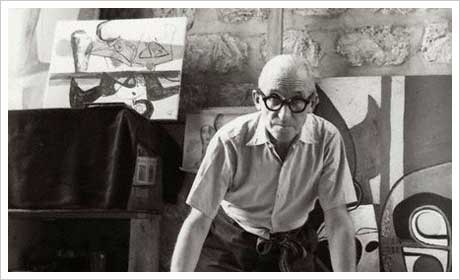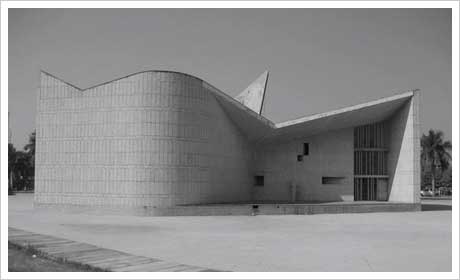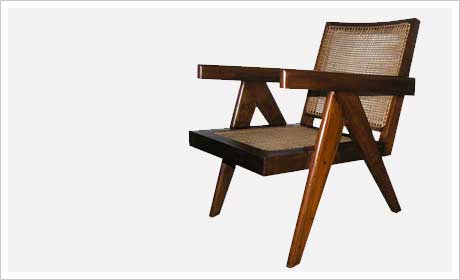Biography | Pierre Jeanneret
(Swiss, 1896-1967)
Architect and furniture designer Pierre Jeanneret worked for most of his life alongside his more famous cousin Le Corbusier (Charles-Edouard Jeanneret). Pierre partnered with his cousin in 1922 following his graduation from the École des Beaux-Arts, and they worked on a number of major building projects together.
Le Corbusier and Jeanneret renewed their working relationship in the early 1950s to collaborate on the urban planning project in Chandigarh, India. Chandigarh was an experimental modernist city located approximately 150 miles north of New Delhi and serves as capital to two Indian states, Punjab and Haryana. There they created many low cost civic buildings that are now considered landmarks of modern architecture. To complement the buildings, Jeanneret also designed much of the furniture for these government offices and educational institutions. The furniture is functional and made of native materials by local craftsmen. His designs even extended to lampposts and manhole covers around the city.
Le Corbusier left midway through the project and Jeanneret was subsequently appointed Chief Architect and Urban Planning Designer. Pierre stayed in Chandigarh for more than fifteen years even after the completion of the project. Buildings of note include most of the architecture in Chandigarh's university including the Ghandi Bhawan and the University Library.
Jeanneret eventually returned to Geneva in 1965 in poor health. Upon his death two years later his ashes were scattered in Chandigarh's Sukhna Lake in accordance with his will.
For Le Corbusier, Chandigarh was the first city he was able to plan and actually build. A renewed international interest in the work of Le Corbusier and his senior architects Pierre Jeanneret and husband and wife team Maxwell Fry and Jane B. Drew, has led Chandigarh city officials to recently apply for UNESCO World Heritage status.






